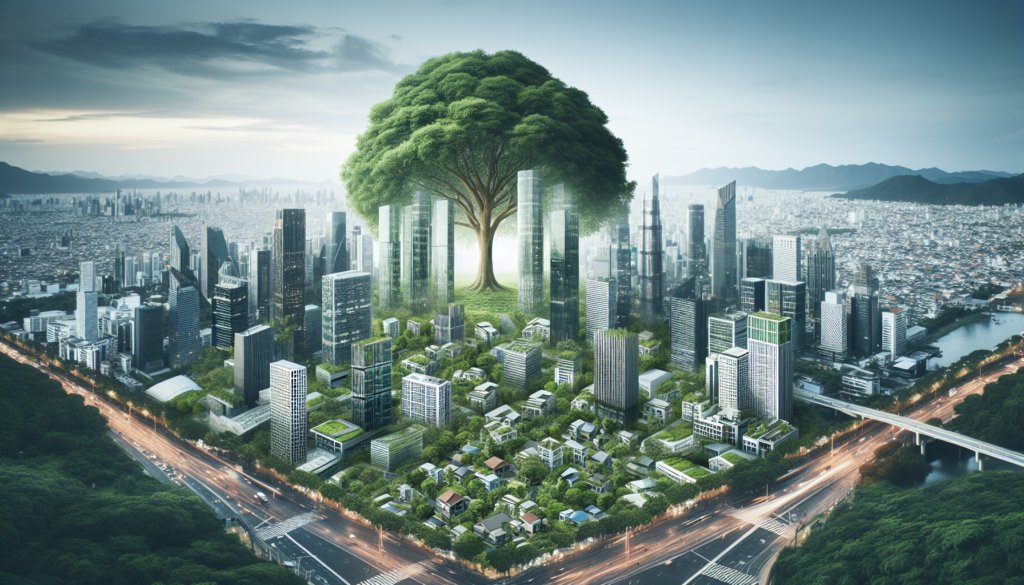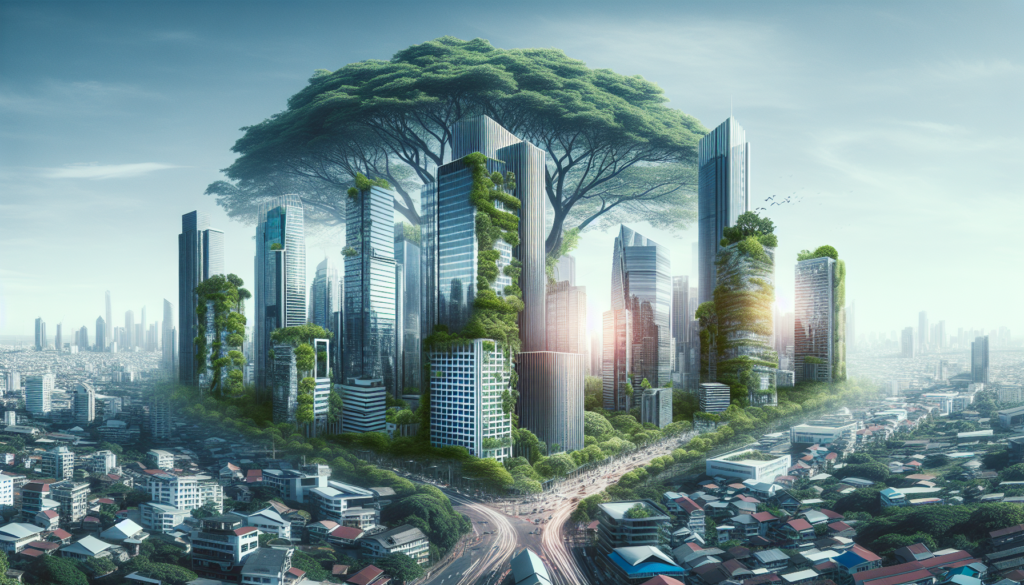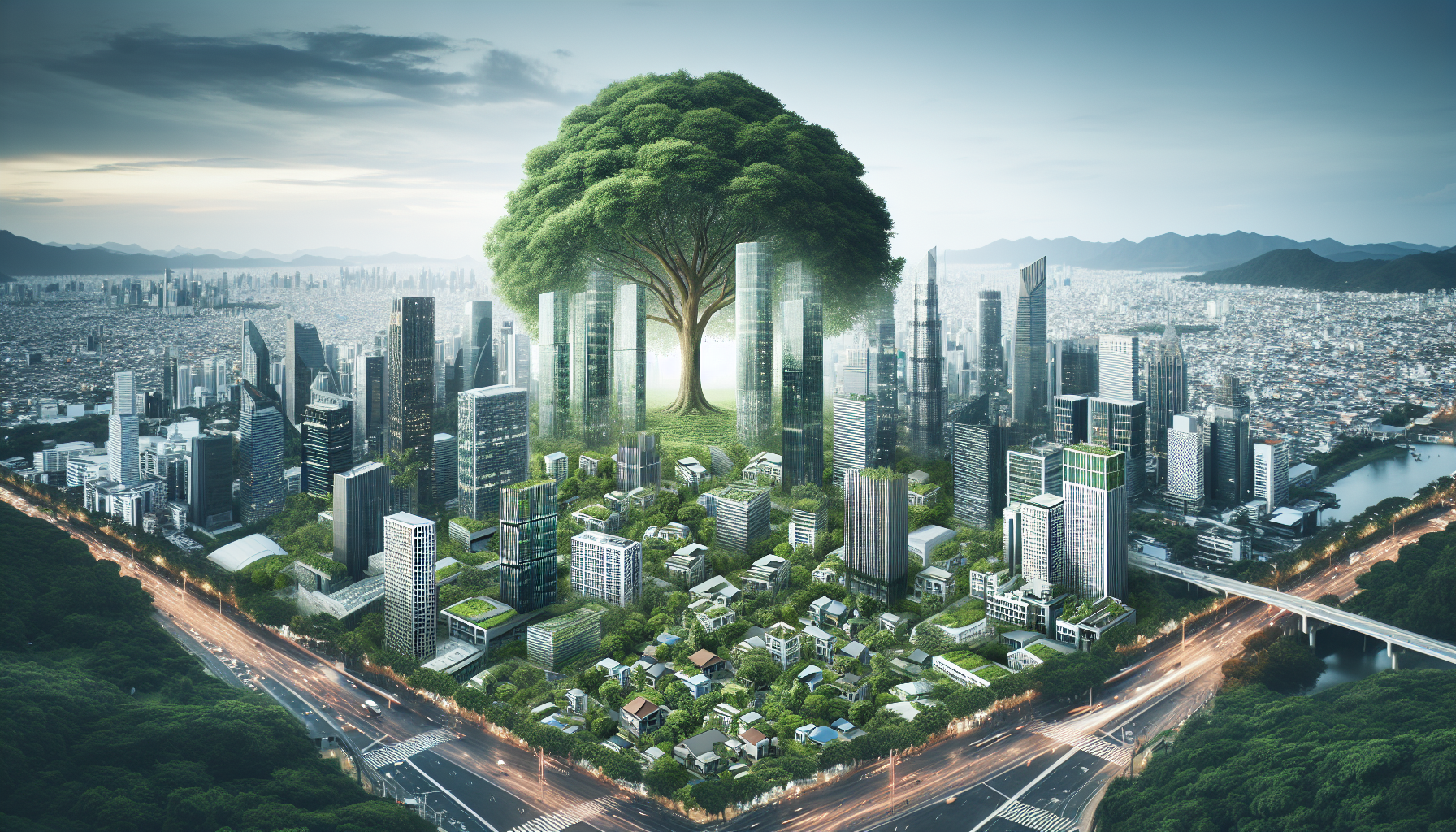Imagine a city that thrives on the principles of sustainability, where green spaces, energy-efficient buildings, and accessible public transportation are seamlessly integrated into the urban fabric. This vision of Sustainable Urban Planning and Design holds the key to creating livable, resilient, and environmentally friendly cities for a better future. By prioritizing the needs of both people and the planet, cities can tackle challenges such as climate change, population growth, and resource scarcity. In this article, we will explore the importance of sustainable urban planning and design, and how it can shape the cities we live in.
Sustainable Urban Planning And Design
In today’s rapidly urbanizing world, the need for sustainable urban planning and design has become more important than ever. As more and more people migrate from rural areas to cities, the strain on resources and infrastructure increases. Sustainable urban planning aims to address these challenges by creating livable, resilient, and environmentally-friendly cities that meet the needs of both current and future generations. By incorporating principles such as smart growth, walkability, and green infrastructure, sustainable urban planning and design strive to create cities that are both socially and environmentally sustainable.

Importance of Sustainable Urban Planning
Sustainable urban planning plays a crucial role in ensuring the long-term success and well-being of cities. By taking an integrated approach that considers various aspects such as transportation, housing, and natural resource management, sustainable urban planning seeks to create healthy and prosperous communities. It also helps in reducing the carbon footprint of cities and mitigating the impacts of climate change. Moreover, sustainable urban planning is essential for promoting social equity and inclusivity by creating neighborhoods that are accessible to all, regardless of their socio-economic backgrounds or physical abilities.
Principles of Sustainable Urban Planning
The principles of sustainable urban planning serve as guiding principles for creating cities that are economically, socially, and environmentally sustainable. These principles include:
-
Compactness and Mixed Land Use: Encouraging compact development and mixed land use helps to reduce the need for excessive commuting, promotes walkability, and maximizes the efficiency of existing infrastructure.
-
Connectivity and Accessibility: Designing cities with a strong emphasis on connectivity and accessibility ensures that residents have convenient access to essential services, amenities, and public transportation options.
-
Green Infrastructure and Open Spaces: Integrating green spaces, parks, and urban forests into urban planning helps to improve air quality, enhance biodiversity, and provide recreational spaces for residents.
-
Energy Efficiency and Renewable Energy: Emphasizing energy-efficient building design and promoting the use of renewable energy sources reduces greenhouse gas emissions and lowers energy costs.
-
Water and Waste Management: Implementing sustainable strategies for water management, such as rainwater harvesting and wastewater recycling, helps to conserve water resources and minimize pollution.
-
Resilience and Adaptability: Designing cities with a focus on resilience and adaptability ensures that they can withstand and recover from natural disasters and other unforeseen events.
Key Components of Sustainable Urban Design
Sustainable urban design encompasses several key components that contribute to the overall sustainability of cities. These components include:
-
Transportation: Developing efficient and sustainable transportation systems, such as public transit, cycling infrastructure, and pedestrian-friendly streets, reduces reliance on private vehicles and promotes sustainable mobility options.
-
Housing: Creating affordable, energy-efficient, and inclusive housing options that cater to diverse population groups contributes to a socially and economically sustainable city.
-
Green Building and Infrastructure: Incorporating green building practices and sustainable infrastructure, such as green roofs, rain gardens, and permeable pavements, helps to reduce resource consumption and minimize environmental impact.
-
Urban Agriculture: Promoting urban agriculture initiatives, such as rooftop gardens, community gardens, and vertical farming, can enhance food security, reduce food miles, and improve the overall livability of cities.
-
Environmental Conservation: Protecting and preserving natural resources, such as wetlands, forests, and wildlife habitats, within the urban fabric helps to maintain ecological balance and promote biodiversity.
Benefits of Sustainable Urban Planning and Design
The benefits of sustainable urban planning and design are far-reaching and impactful. Some of the key benefits include:
-
Environmental Sustainability: By reducing carbon emissions, conserving resources, and protecting natural ecosystems, sustainable urban planning helps to mitigate climate change and enhance environmental sustainability.
-
Improved Quality of Life: Creating cities that prioritize walkability, access to green spaces, and public amenities improves the overall quality of life for residents. This includes better air quality, reduced noise pollution, and enhanced public health outcomes.
-
Economic Opportunities: Sustainable urban planning and design generate economic opportunities by attracting investment, creating jobs in green industries, and fostering innovation and entrepreneurship.
-
Social Equity and Inclusivity: By ensuring equal access to housing, transportation, and public services, sustainable urban planning promotes social equity and inclusivity, creating more cohesive and resilient communities.
-
Reduced Costs: Implementing sustainable practices and technologies, such as energy-efficient buildings and renewable energy systems, can result in long-term cost savings for both individuals and the government.
-
Enhanced Resilience: By incorporating resilience strategies into urban planning, cities can better withstand and recover from natural disasters and other shocks, minimizing damage and disruption.

Challenges in Implementing Sustainable Urban Planning and Design
While the benefits of sustainable urban planning and design are clear, there are several challenges that cities face in implementing these practices:
-
Political Will and Institutional Capacity: Implementing sustainable urban planning requires strong political will and institutional capacity to overcome resistance to change and coordinate various stakeholders.
-
Limited Resources: Financing sustainable urban planning initiatives can be a challenge for many cities, especially those with limited financial resources. Finding creative funding mechanisms and leveraging public-private partnerships can help overcome this challenge.
-
Existing Infrastructure: Retrofitting existing infrastructure to align with sustainable design principles can be costly and challenging. However, innovative approaches such as adaptive reuse and brownfield redevelopment can help overcome this challenge.
-
Stakeholder Engagement: Engaging diverse stakeholders, including community members, businesses, and non-governmental organizations, in the planning and decision-making process is crucial for the success of sustainable urban planning and design projects.
-
Resistance to Change: Resistance from entrenched interests, outdated regulations, and established norms can present significant challenges to implementing sustainable urban planning practices. Effective advocacy and education are needed to overcome this resistance.
Technological Innovations in Sustainable Urban Planning and Design
Technological innovations have played a crucial role in advancing sustainable urban planning and design. Some key innovations include:
-
Smart City Technologies: The integration of Internet of Things (IoT) devices, data analytics, and artificial intelligence (AI) in urban infrastructure enables cities to optimize resource allocation, improve energy efficiency, and enhance the overall sustainability of urban environments.
-
Renewable Energy Systems: Advancements in solar and wind energy technologies, battery storage, and grid integration are facilitating the widespread adoption of renewable energy sources in urban areas.
-
Building Information Modeling (BIM): BIM technology allows for the efficient and collaborative design, construction, and operation of sustainable buildings and infrastructure. It enables architects and engineers to visualize and optimize energy performance and resource use.
-
Intelligent Transportation Systems (ITS): ITS technologies, such as real-time traffic monitoring, smart traffic signals, and connected autonomous vehicles, are improving the efficiency and sustainability of urban transportation systems.
-
Urban Data Analytics: The collection and analysis of urban data, including sensors and satellite imagery, provide valuable insights for sustainable urban planning and design decision-making.
Case Studies of Successful Sustainable Urban Planning and Design Projects
Several cities around the world have successfully implemented sustainable urban planning and design strategies. Some notable examples include:
-
Curitiba, Brazil: Known for its innovative and comprehensive urban planning, Curitiba has implemented a bus rapid transit system, pedestrian-friendly streets, and extensive green spaces, making it a model for sustainable urban planning.
-
Copenhagen, Denmark: Copenhagen has made significant investments in cycling infrastructure and pedestrian-friendly streets, resulting in high rates of cycling and low greenhouse gas emissions from transportation.
-
Masdar City, United Arab Emirates: Masdar City is a planned eco-city that incorporates renewable energy, sustainable buildings, and smart grid technologies to create a carbon-neutral city.
-
Freiburg, Germany: Freiburg has prioritized sustainable urban planning and design, with a focus on renewable energy, passive housing, and sustainable transportation solutions. The city has achieved a high level of energy self-sufficiency and is known for its sustainable neighborhoods.
Role of Community Engagement in Sustainable Urban Planning and Design
Community engagement is crucial for the success of sustainable urban planning and design projects. Involving community members in the planning process ensures that their needs and aspirations are considered, and helps to build local support for sustainable initiatives. Community engagement can take various forms, such as public consultations, participatory design workshops, and neighborhood associations. It is essential to create platforms for open dialogue and collaboration between residents, planners, and policymakers to achieve sustainable urban development that reflects the priorities and values of the community.
Policy and Regulatory Frameworks for Sustainable Urban Planning and Design
Effective policy and regulatory frameworks are foundational for sustainable urban planning and design. Governments at various levels play a critical role in setting the regulatory and legal framework to promote sustainability in urban development. This includes zoning regulations, building codes, and incentive programs that encourage developers and homeowners to adopt sustainable practices. Additionally, governments can provide financial support, technical assistance, and capacity building to support the implementation of sustainable urban planning initiatives.
Future Trends in Sustainable Urban Planning and Design
As the field of sustainable urban planning and design continues to evolve, several future trends are expected to shape the cities of tomorrow:
-
Climate Resilience: With the increasing frequency and intensity of climate-related events, cities will need to prioritize climate resilience in their planning and design processes.
-
Digitization and Data-Driven Planning: The use of digital technologies, data analytics, and predictive modeling will become increasingly important for evidence-based decision-making and urban planning.
-
Circular Economy: The adoption of circular economy principles, including reducing waste, recycling materials, and promoting resource efficiency, will become more prevalent in urban planning and design.
-
Socially-Responsive Design: Cities will place a greater emphasis on social equity, inclusivity, and the integration of marginalized communities in urban planning and design processes.
-
Urban Mobility: The promotion of sustainable and shared mobility options, such as electric vehicles, bike-sharing programs, and carpooling, will continue to be prioritized in urban planning efforts.
In conclusion, sustainable urban planning and design are of utmost importance in creating livable, resilient, and environmentally-friendly cities. By adhering to the principles of sustainable urban planning, incorporating key components of sustainable urban design, and leveraging technological innovations, cities can benefit from improved quality of life, economic opportunities, and environmental sustainability. However, challenges in implementation, such as limited resources and resistance to change, need to be addressed through strong political will, stakeholder engagement, and supportive policy frameworks. With the right approach and collective efforts, we can create cities that are truly sustainable and meet the needs of present and future generations.

